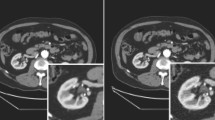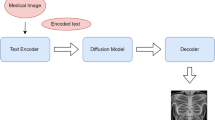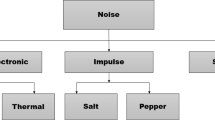Abstract
In the past decades, CT images have been widely used and played a critical role in medical diagnosis. However, low-dose CT images are often contaminated by noise, this being the most important factor affecting the quality of a CT image. This paper proposes a novel integrated framework and a denoising method for low-dose medical CT images to obtain a better denoising effect whilst at the same time preserving an image’s local structure information. First, an image moving decomposition is employed to decompose the CT image. The original CT noisy image is decomposed, and the components will be processed separately, so that the details and edges of the CT image can be better preserved. Next, the Shearlet Transformation-based denoising method is applied to the component which contains edges and detailed information of the CT image. The multi-directionality and multi-scale property of the Shearlet make it possible to obtain better effect in denoising the detail parts. BM3D filtering is used to remove noise in the component similar to the origin image, and obtain ideal denoising results in denoising the approximate components (mainly low frequency part) of the CT image. With the two processed components and the inverse decomposition, the denoised image is obtained. Finally, simulations and clinical experiments are conducted and comparisons made. The experimental results show the proposed denoising method can obtain better performances in terms of PSNR value, SSIM and FoM and thus have very competitive results compared with other existing CT denoising methods.











Similar content being viewed by others
Data Availability
We confirm that the data is available upon reasonable request.
References
M. Aharon, M. Elad, A. Bruckstein, K-SVD: an algorithm for designing overcomplete dictionaries for sparse representation. IEEE Trans. Signal Process. 54(11), 4311–4322 (2006)
A. Buades, B. Coll, J.M. Morel, A Non-Local Algorithm for Image Denoising, Computer Vision and Pattern Recognition. CVPR 2005. IEEE Computer Society Conference (2005)
M. Chen, Y.F. Pu, Y.C. Bai, A fractional-order variational residual CNN for low dose CT Image denoising, in Intelligent Computing Theories and Application. ICIC 2019. Lecture Notes in Computer Science, vol. 11643, ed. by D.S. Huang, V. Bevilacqua, P. Premaratne (Springer, Cham, 2019)
Y. Chen, X. Yin, L. Shi et al., Improving abdomen tumor low-dose CT images using a fast dictionary learning based processing. Phys. Med. Biol. 58(16), 5803–5820 (2013)
K. Dabov, A. Foi, V. Katkovnik, K. Egiazarian, Image denoising by sparse 3-D transform-domain collaborative filtering. IEEE Trans. Image Process. 16(8), 2080–2095 (2007)
Z. Dan, X. Chen, H. Gan, C. Gao, Locally Adaptive Shearlet Denoising Based on Bayesian MAP Estimate. in Sixth International Conference on Image and Graphics (IEEE Computer Society, HeFeihina, 2011)
M. Diwakar, M. Kumar, A review on CT image noise and its denoising. Biomed. Signal Process. Control 42(1), 73–88 (2018)
M. Diwakar, M. Kumar, CT image denoising using NLM and correlation-based wavelet packet thresholding. IEEE Image Process. 12(5), 708–715 (2018)
G. Ghimpeteanu, T. Batard, M. Bertalmío, S. Levine, A decomposition framework for image denoising algorithms. IEEE Trans. Image Process. 25(1), 388–399 (2016)
K. Guo, D. Labate, Optimally sparse multidimensional representation using shearlets. SIAM J. Math. Anal. 39(1), 298–318 (2007)
M. Kumar, M. Diwakar, A new exponentially directional weighted function based CT image denoising using total variation. J. King Saud Univ. Comput. Inf. Sci. (2016). https://doi.org/10.1016/j.jksuci.2016.12.002
G. Kutyniok, D. Labate et al., Shearlets: Multiscale Analysis for Multivariate Data (Birkhäuser, Boston, 2012)
G. Kutyniok, W. Lim, G. Steidl, Shearlets: theory and applications. GAMM- Mitteilungen 37(2), 259–280 (2014)
Y.J. Li, J. Zhang, M. Wang, Improved BM3D denoising method. IET Image Proc. 11(12), 1197–1204 (2017)
Z. Li, L. Yu, J.D. Trzasko et al., Adaptive nonlocal means filtering based on local noise level for CT denoising. Med. Phys. 41(1), 011908 (2014)
J. Ma, J. Huang, Q. Feng et al., Low-dose computed tomography image restoration using previous normal-dose scan. Med. Phys. 38(10), 5713–5731 (2011)
S. Mallat, A Wavelet Tour of Signal Processing (Academic Press, San Diego, 1998)
C. McLeavy, M. Chunara, R. Gravell, A. Rauf, A. Cushnie, C.S. Talbot et al., The future of CT: deep learning reconstruction. Clin. Radiol. 76, 407–15 (2021)
J. Mohan, V. Krishnaveni, Y. Guo, A survey on the magnetic resonance image denoising methods. Biomed. Signal Process. Control 9(1), 56–69 (2014)
C.W. Tian, Y. Xua, Z.Y. Li, W. Zuo, L. Fei, H. Liu, Attention-guided CNN for image denoising. Neural Netw. 124, 117–129 (2020)
Q. Yang, P. Yan, Y. Zhang et al., Low dose CT image denoising using a generative adversarial network with Wasserstein distance and perceptual loss. IEEE Trans. Med. Imaging 37(6), 1348–1357 (2018)
S. Yi, D. Labate, G.R. Easley, H. Krim, A Shearlet approach to edge analysis and detection. IEEE Trans. Image Process. 18(5), 929–941 (2009)
K. Zhang, W. Zuo, Y. Chen, D. Meng, L. Zhang, Beyond a Gaussian denoiser: residual learning of deep CNN for image denoising. IEEE Trans. Image Process. 26, 3142–55 (2017)
K. Zhang, W. Zuo, L. Zhang, FFDNet: toward a fast and flexible solution for CNN-based image denoising. IEEE Trans. Image Process. 27, 4608–22 (2018)
J. Zhang, H.L. Zhou, Y. Niu, J.C. Lv, J. Chen, Y. Cheng, CNN and multi-feature extraction based denoising of medical CT images. Biomed. Signal Process. Control 67, 102545 (2021)
H. Zhong, K. Ma, Y. Zhou, Modified BM3D algorithm for image denoising using nonlocal centralization prior. Signal Process. 106(2), 342–347 (2015)
Acknowledgements
This work is partially supported by the National Natural Science Foundation of China (60974042).
Author information
Authors and Affiliations
Corresponding author
Additional information
Publisher's Note
Springer Nature remains neutral with regard to jurisdictional claims in published maps and institutional affiliations.
Rights and permissions
About this article
Cite this article
Zhang, J., Lv, J. & Cheng, Y. A Novel Denoising Method for Medical CT Images Based on Moving Decomposition Framework. Circuits Syst Signal Process 41, 6885–6905 (2022). https://doi.org/10.1007/s00034-022-02084-6
Received:
Revised:
Accepted:
Published:
Issue Date:
DOI: https://doi.org/10.1007/s00034-022-02084-6




